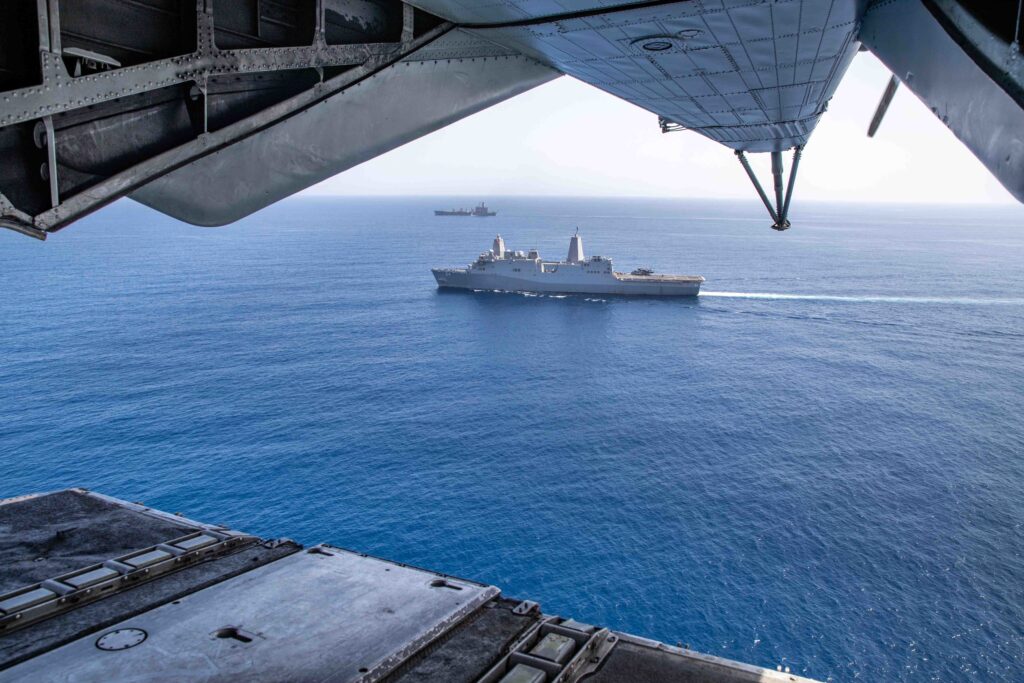
*****
WASHINGTON — The presence of an amphibious ready group (ARG), with a Marine expeditionary unit (MEU)embarked, gives a regional combatant commander an option to respond to a crisis ashore. When the United States government decided to evacuate its embassy in Sudan on April 23, last week, no ARG-MEU was available in the region.
Similarly, if the United States government had decided that projecting a force ashore in Sudan was needed to protect or evacuate some 15,000 Americans in Sudan, it would have had few options.
To Marine Corps Commandant General David. H. Berger, testifying April 2 before the House Armed Services Committee, the Sudan crisis is an example of the lack of a crisis response capability that the Navy and Marine Corps amphibious warfare forces, if nearby, could have provided to the combatant commander, in this case, Marine General Michael E. Langley, commander, U.S. Africa Command (AFRICOM).
To Berger, the crisis illustrated yet again why the nation’s need for 31 [large and medium amphibious warfare ships] to provide the crisis response and deterrence capabilities needed by U.S. combatant commanders.
Berger was referring to the statutory requirement in the 2023 National Defense Authorization Act for the Navy to sustain a fleet of a minimum of 31 amphibious warfare ships. Without such a force, there would be occasions when response would be lacking.
“We would have gaps during the year when we would not have an at-sea capability for the combatant commander when something happens,” Berger said. “We would not be deterring; we would not be in a position to respond. In places like Türkiye or places like Sudan, I feel like I let down the combatant commander, because General Langley needs options. He didn’t have a sea-based option. That’s how we reinforce embassies. That’s how we evacuate them. That’s how we deter.
“It opens up risks for the combatant commander,” Berger said. “We have to have 31 [large and medium amphibious warfare ships] at a minimum; nothing less.”
- SECNAV Advocates Increased Legal Immigration to Increase Shipbuilder Workforce - April 23, 2024
- Insitu Going Strong at 30, Focusing on Maritime Operations - April 8, 2024
- Navy Awards Boeing Additional Funds for MQ-25 Drones for Testing - April 3, 2024






